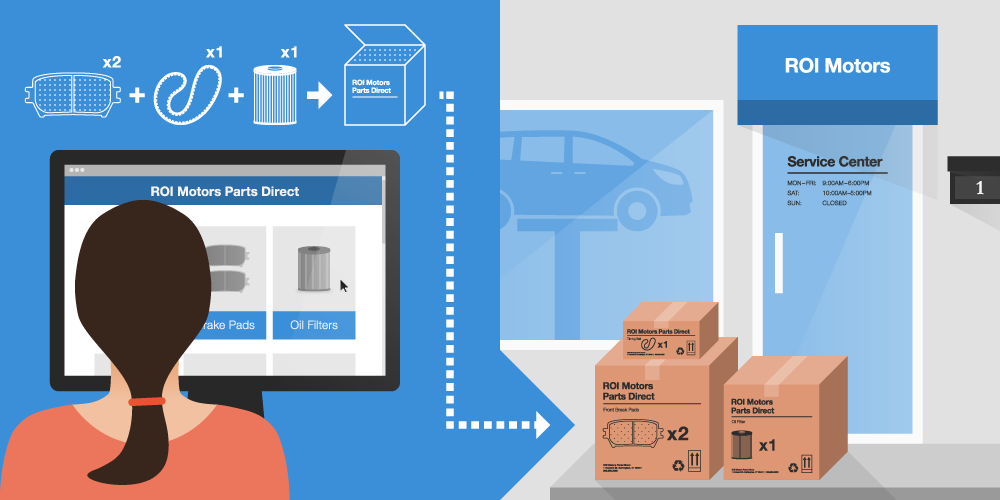Dealer.com welcomes guest blogger Amanda Oppenheim, Marketing Manager of RevolutionParts, part of the Dealer.com Certified Provider Program.
A modern automotive retail website is much more than just a marketing channel.
It’s a rich resource for auto research, a compendium of cars with a purchase process that can begin online, and an opportunity to engage and connect with customers to build brand loyalty. It’s a critical dealership tool that should provide a shopping experience that empowers customers, helping them make the choices that will get them the right car, and your dealership the highest profits.
But the car is only one type of product your dealership sells. You’re dealership may also have a parts department, the unsung hero of your business that provides a reliable source of revenue. Original parts wear out and equipment needs to be replaced. Customers want to buy high-quality OEM replacements so they head to your parts department to make a purchase.
But what if you could bring your parts department to your customers? There are vendors who provide e-commerce solutions that incorporate a parts store directly into your dealership website.
With an online parts store, you can: A) replace your website’s existing parts request form with a user-friendly parts and accessories catalog; B) sell parts on your existing dealership website; or, C) create a separate custom parts website in order to sell your merchandise nationally. Parts e-commerce can significantly increase profits while providing customers with a convenient way to buy automotive parts. And it’s easier than you might think.
Here are five steps to get your online parts store up and running:
1. Assess your resources and set goals.
Is your goal simply to get started with e-commerce and receive a handful of extra orders each month, or do you want to aggressively grow the volume of your parts sales? Or maybe you aren’t ready to sell online yet but want to improve the customer experience on your website. Once you determine your goals, you can assess your staff size and marketing budget to decide the best path to putting your parts department online.
2. Evaluate and select a parts e-commerce solution provider.
If you evaluate your resources but still aren’t quite sure of which online channel is best for your dealership, ask e-commerce providers for guidance. E-commerce providers supply the online parts and accessories catalog, shopping cart, order processing, shipping tools, and many other helpful features. They will also completely handle the online implementation of your parts store so you don’t have to worry about the technical details. The e-commerce provider will be critical to your success, so thoroughly do your research and view online product demonstrations. You can find a parts e-commerce checklist here with 50 questions to ask vendors and helpful tips for evaluating e-commerce platforms.
3. Configure administrative settings.
Your e-commerce provider will help you set up your shipping methods, tax settings, payment gateway, and other back-end settings necessary to run your online parts business.
4. Customize your online parts store.
If you are plugging a parts store into your existing site, you won’t have to do much customization. If you are selling merchandise nationally on a standalone site, then your e-commerce provider should create a custom website design and logo for you.
5. Start selling.
Once your parts store goes digital you will start to see online sales and need to fulfill and ship these orders. You can write original product descriptions for best-selling parts to increase organic traffic to your site. Google product listing ads are another way to increase traffic and sales.
An online parts department is much easier than you may think and can take as little as one day to set up. Having this online revenue channel will grow your market share and profit, and will significantly improvement the parts-buying experience for your customers.


